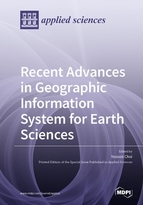Recent Advances in Geographic Information System for Earth Sciences
A special issue of Applied Sciences (ISSN 2076-3417). This special issue belongs to the section "Earth Sciences".
Deadline for manuscript submissions: closed (31 December 2019) | Viewed by 66358
Special Issue Editor
Interests: smart mining; renewables in mining; space mining; AICBM (AI, IoT, cloud, big data, mobile) convergence; unmanned aerial vehicle; mine planning and design; open-pit mining operation; mine safety; geographic information systems; 3D geo-modeling; geostatistics; hydrological analysis; energy analysis and simulation; design of solar energy conversion systems; renewable energy systems
Special Issues, Collections and Topics in MDPI journals
Special Issue Information
Dear Colleagues,
Geographic Information System (GIS) is a computer-based technology and methodology for collecting, managing, analyzing, modeling, and presenting geospatial data for a wide range of applications. GIS plays a vital role in Earth sciences by providing a powerful means of looking at the world and tools for solving complex problems. The scientific community has used GIS to reveal fascinating details about the Earth and even other planets. This Special Issue (SI) aims to encourage researchers to address the recent advances in GIS for Earth sciences. This SI will consider original research contributions and reviews on all areas of Earth sciences, including (but not limited to):
- GIS in Physical Geography
- GIS in Geology and Mineral Science
- GIS in Geophysics and Geodesy
- GIS in Soil Science
- GIS in Environmental Science
- GIS in Hydrology
- GIS in Oceanography
- GIS in Meteorology
- GIS in Astronomy
Assoc. Prof. Dr. Yosoon Choi
Guest Editor
Manuscript Submission Information
Manuscripts should be submitted online at www.mdpi.com by registering and logging in to this website. Once you are registered, click here to go to the submission form. Manuscripts can be submitted until the deadline. All submissions that pass pre-check are peer-reviewed. Accepted papers will be published continuously in the journal (as soon as accepted) and will be listed together on the special issue website. Research articles, review articles as well as short communications are invited. For planned papers, a title and short abstract (about 100 words) can be sent to the Editorial Office for announcement on this website.
Submitted manuscripts should not have been published previously, nor be under consideration for publication elsewhere (except conference proceedings papers). All manuscripts are thoroughly refereed through a single-blind peer-review process. A guide for authors and other relevant information for submission of manuscripts is available on the Instructions for Authors page. Applied Sciences is an international peer-reviewed open access semimonthly journal published by MDPI.
Please visit the Instructions for Authors page before submitting a manuscript. The Article Processing Charge (APC) for publication in this open access journal is 2400 CHF (Swiss Francs). Submitted papers should be well formatted and use good English. Authors may use MDPI's English editing service prior to publication or during author revisions.
Keywords
- Geo-spatial data collection
- Geo-spatial modeling
- Geo-spatial analysis
- Geo-spatial statistics
- Geo-spatial simulation
- Geo-spatial intelligence
- Geo-spatial visualization
- Geo-spatial decision support






